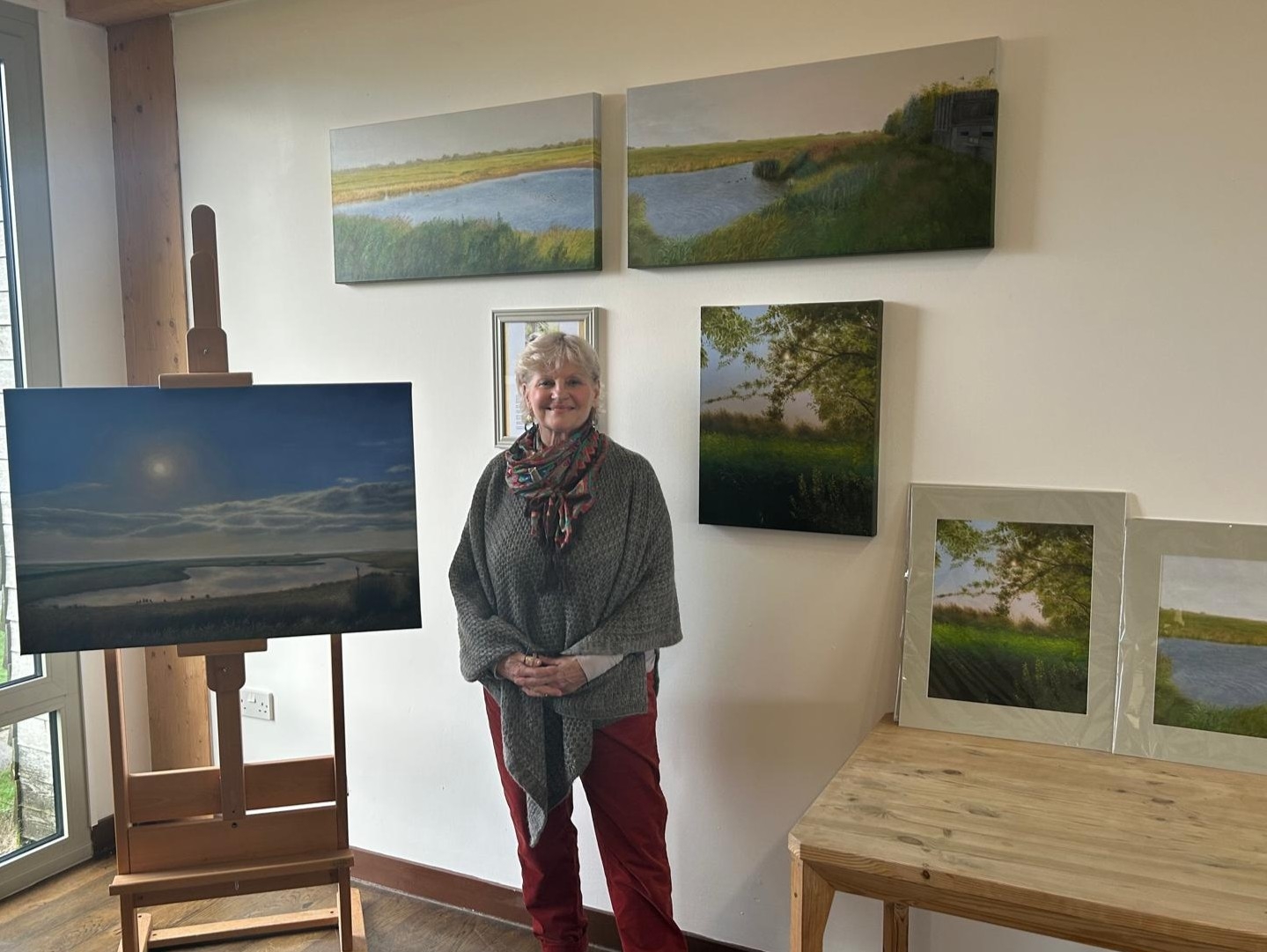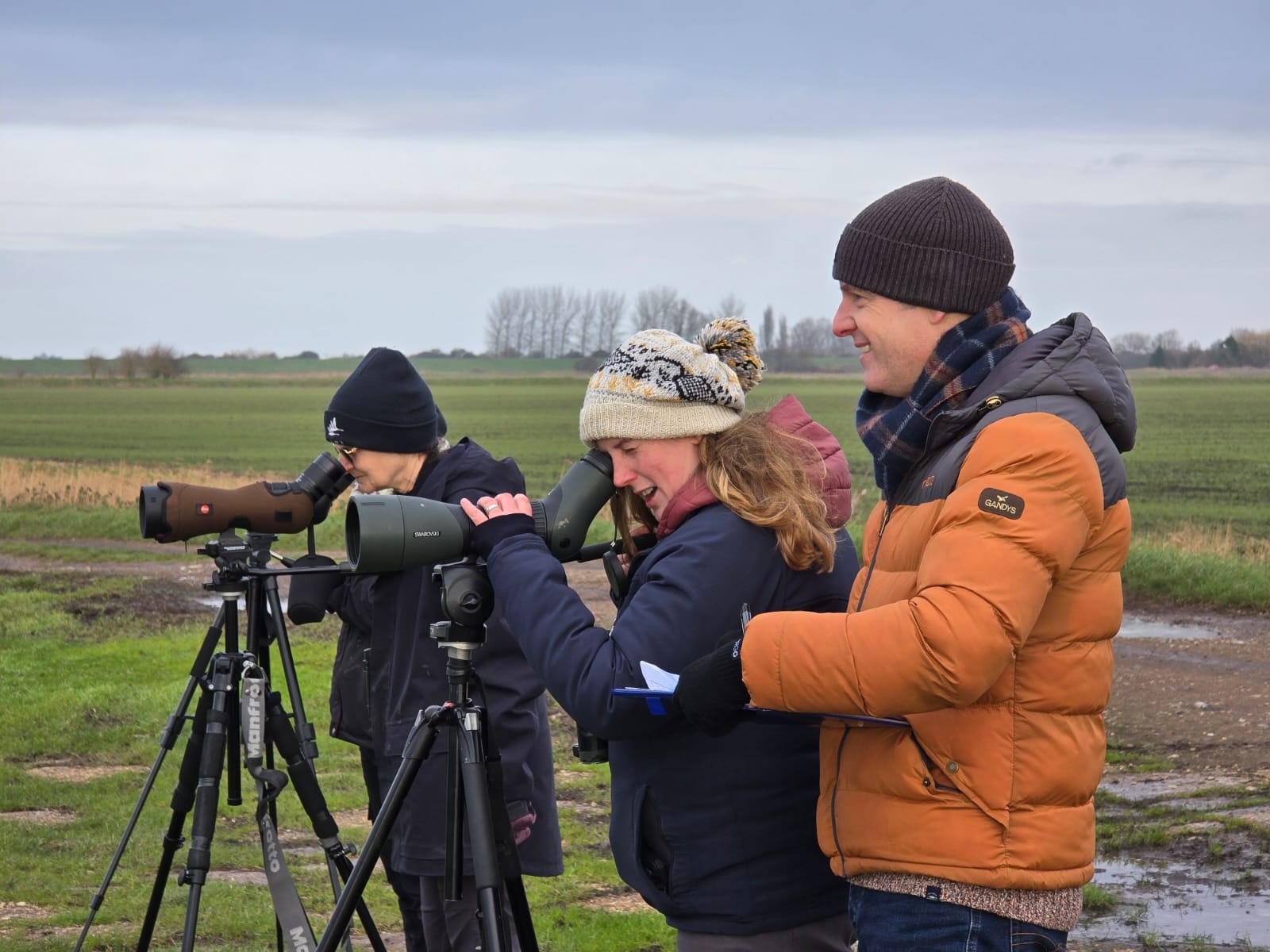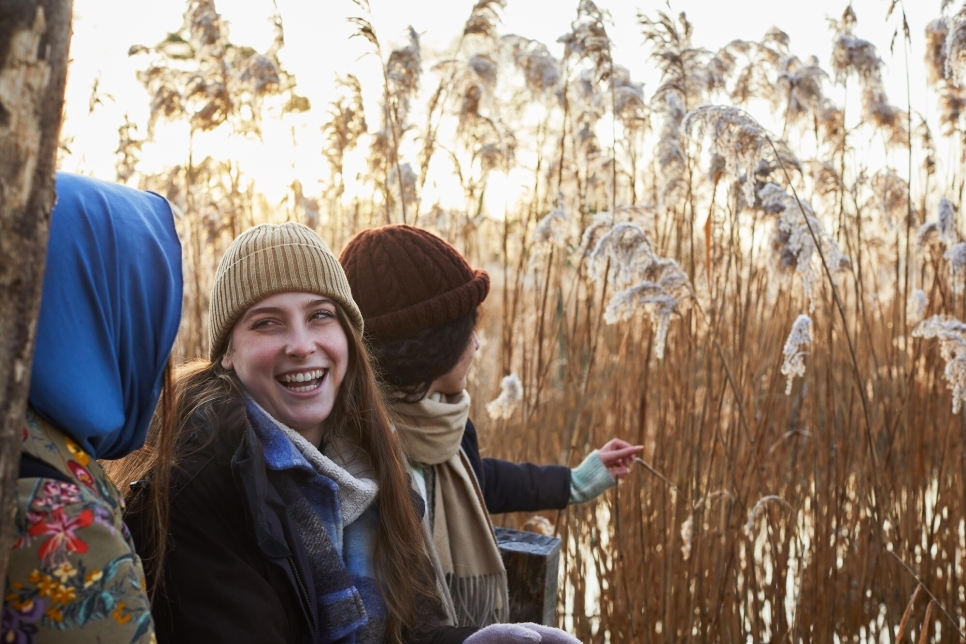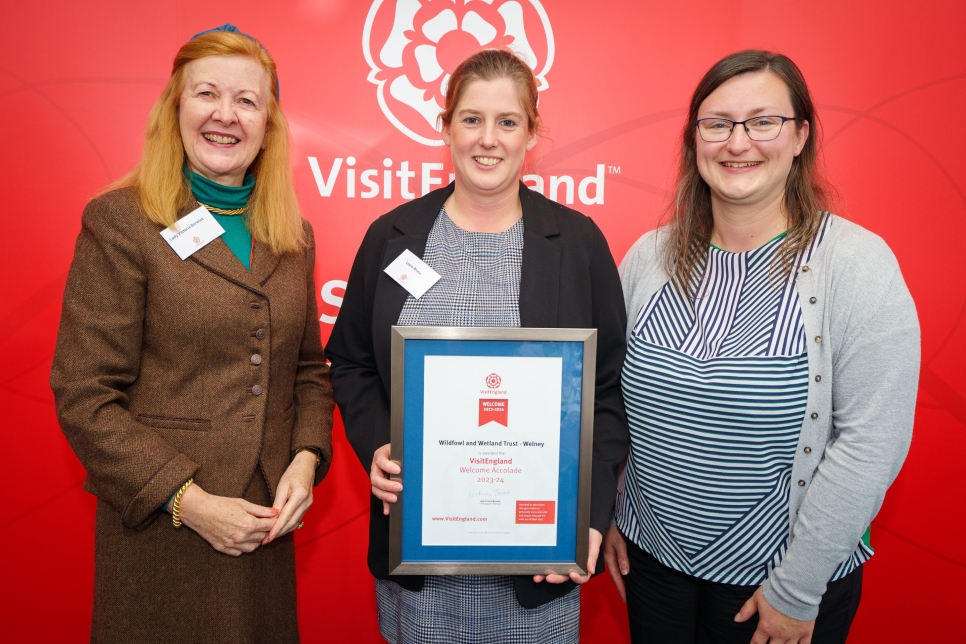Back to the beginning for family visit

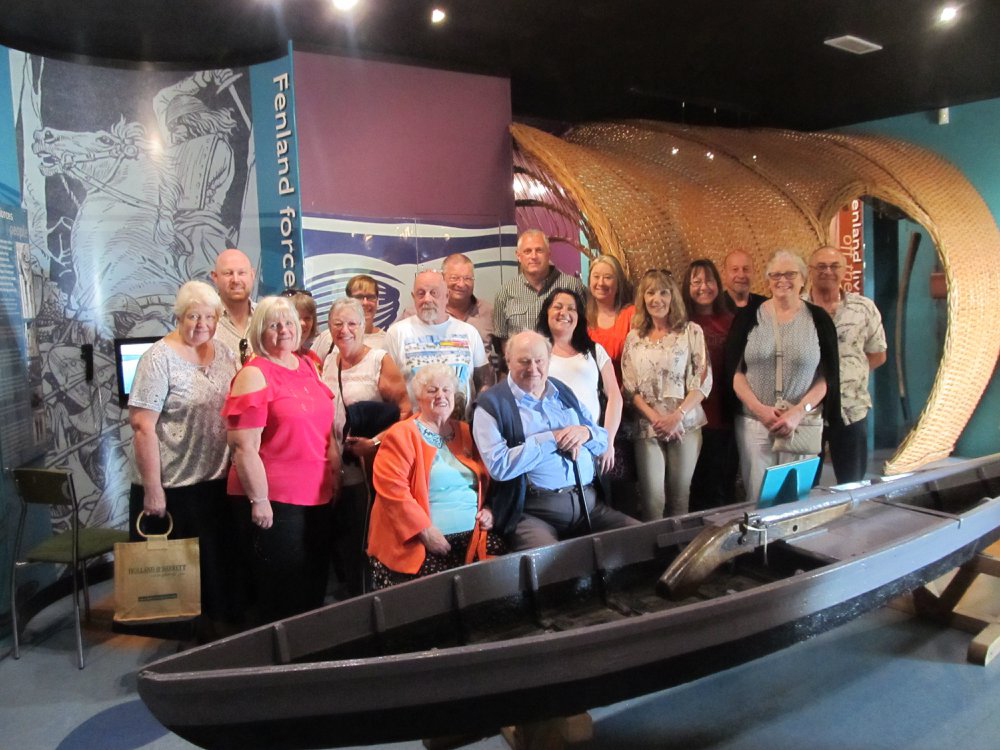
The family of Josh Scott, first warden of WWT Welney back in 1970, made a return visit to the reserve for a chance to all see one another, some meeting for the first time. It was also an opportunity to reconnect with the family history.
Josh Scott was a real Fenman, having grown up in a world of punt gunning and eel fishing. His roots were on the Welney Washes as he made his livelihood from shepherding and wildfowling, with the occasional winter fen skating. This is where he first met Sir Peter Scott in the late 1960’s.
At the time, Josh asked Peter Scott his intentions with the land. Peter Scott was aiming to create a block of land forming the refuge and within 30 minutes of conversation, he asked Josh to take the job as warden of this land. Josh made the change from wildfowler to warden, saying that he felt this was an easy decision to take; easier than if he had been wildlfowling as a hobby.
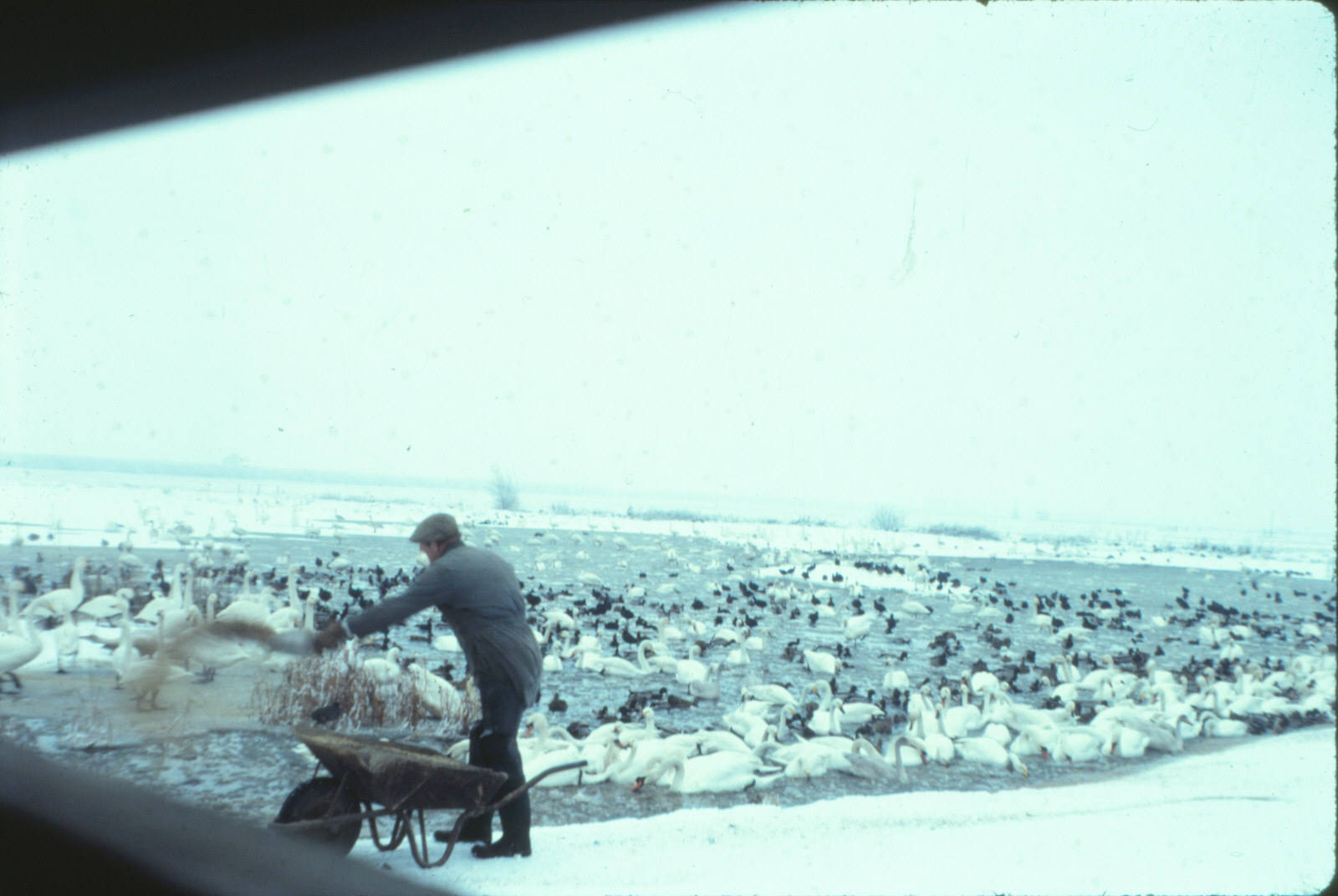
In the 48 years since Josh Scott started feeding the swans in front of the main hide, the wetland centre has developed considerably to benefit wildlife and people. Both increasing the size of habitat available for wetland wildlife and responding to pressures that flooding has on the Ouse Washes, to increasing the access possibilities for visitors and helping them witness the many wildlife highlights throughout the year.
Anthony Scott, nephew of Josh Scott, said:
‘It was such a pleasure to revisit the Wetland Trust at Welney after a lot of years.
‘I can recall as a small boy going to visit my Uncle Josh, and then going over to the reserve and observatory with him. I can remember him telling me all the species of winter visitors to the Welney reserve. I first got the opportunity to shoot on the Ouse Washes through my Uncle Josh, many years ago, gaining a lot of knowledge from him, and still today go wildfowling on the Hundred Foot Washes as he did in his day.
‘On our family reunion visit, I actually got to lay in my uncles punt boat with Bacca Jack and it was a real honour to do so. The Wetland Trust is well worth a visit.’
Carolyn Garner, daughter of Josh Scott, said:
‘My memories of Welney go back to when I was a child, I spent many happy hours with my Dad, shepherding on the washes. (Peter Scott) recognised that my Dad knew the washes inside-out, how and when to flood them, how to attract wild birds and so on. When the centre was established, the first office was in our home at Pintail House. That winter the Bewick’s and Whooper swans began to arrive and Dad began to gain their trust, wearing the same clothes and whistling to bring them close to the new observatory. Dad retired in 1983, but never really left the washes – he still went there every day!’
Leigh Marshall, Centre Manager, said:
‘It’s great that the Scott family have revisited the Welney Wetland Centre, where Josh and Sir Peter started work on the reserve all those years ago. It is remarkable to think how Josh Scott first attracting Bewick’s swans close to the main hide, has today become a destination for awe inspiring wildlife spectacles. The wetlands are internationally important in winter for many wildfowl species, including the largest population of Bewick’s swans in the UK.’
Stuart Garner, youngest grandson of Josh Scott, said:
‘Family was always extremely important for my grandad, who was one of 13 children himself, and he doted on us as his grandchildren. My brothers and I all remember spending many happy hours with him on the washes as he checked on the water levels, the birds or his eel nets. So, when I heard one of my cousins was organising a family reunion at the Trust I was keen to attend. It was wonderful to see so many members of grandad’s family pouring over the photos which my mum, Josh’s daughter, had taken along and to hear the stories and shared memories. My fondest memory from the day was being able to take my Great Uncle Brian (who, at 82 years of age, is grandad’s only surviving brother) over to the observatory.’
Josh Scott took the skills that enabled him to be a successful wildfowler and applied them to his work as a warden monitoring the wild birds and helping to shape the foundations of the reserve alongside Sir Peter Scott. Creating the walkways and hides to provide people with opportunities to watch the wildlife spectacles at close range, without causing any disturbance was key for the refuge.
The experience for visitors and wildlife is improving all the time with more recent additions in the form of ramps, electronic doors on hides and resources to enable all visitor to access the reserve and connect with nature. As well as pioneering projects to help some of the most vulnerable and iconic species which rely on wetland habitat in the Fens.
